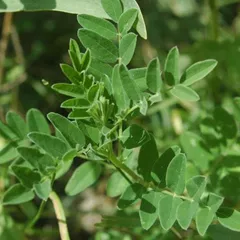Spleen and Kidney Qi Deficiency
The information provided here is not a replacement for a doctor. You shouldn't use it for the purpose of self-diagnosing or self-medicating but rather so you can have a more informed discussion with a professional TCM practitioner.
At a glance
Preliminary reading: What is a pattern? The Spleen in Chinese Medicine The Kidneys in Chinese Medicine The concept of Qi The concept of Deficiency / Empty
Key attributes
Chinese name: 脾肾气虚 Pinyin name: Pí Shèn Qì Xū
Pattern nature: Empty combined pattern
Pattern(s) it combines from: Spleen Qi Deficiency Kidney Qi not Firm
Causes
Common causes: 1. Excessive sexual activity, 2. Physical over-exertion or over-exercising, 3. Childbirth, 4. Poor Diet
Diagnosis
Common symptoms: Palpitation Short of breath Prolonged menses Pale menstrual blood Thin menstrual blood and two other symptoms
Pulse type(s): Weak (Ruo)
Tongue coating: Thin white coating
Tongue color: Pale
Treatment
Treatment principle: Tonify Spleen and Kidney Qi, stabilize the Penetrating Vessel and Blood.
Common formulas: Gu Chong Tang
Pathology
This pattern particularly related to Penetration Vessel Deficiency, with symptoms such as: uterine or menstrual bleeding, presents with thin, pale blood that either gushes or trickles incessantly.
Accompanying symptoms include palpitations, shortness of breath, a pale tongue, and a deficient pulse, indicating a deeper energy imbalance.
This condition, often chronic, arises from a Qi transformation issue within the Kidney, affecting the Spleen and leading to blood loss and overall Qi depletion. Treatment focuses on nourishing the Qi of both the Spleen and Kidney and stabilizing the body’s blood flow.
Causes
Excessive sexual activity: For men, this pattern is frequently caused by excessive sexual activity.
Physical over-exertion or over-exercising: Both excessive physical work or over-exercising can largely consume Kidney Yang, which then leads to Kidney Qi not Firm.
Childbirth: For women, too many children too close together can largely deplete Kidney Qi. It can also happen if childbirth is prolonged and difficult.
Poor Diet: Consuming foods that are difficult to digest or lack nutritional value can weaken the Spleen's ability to transform and transport nutrients, leading to Qi deficiency. Overconsumption of cold, raw, or sweet foods can particularly strain the Spleen and Kidney.
Diagnosing Spleen and Kidney Qi Deficiency
Diagnosing a pattern in Chinese Medicine is no easy feat and should be left to professional practitioners. In particular one has to know how to differentiate between different types of pulses and tongue coatings, shapes and colors as well as learn to read from a long list of seemingly unrelated symptoms.
Pulse type(s): Weak (Ruo)
Tongue coating: Thin white coating
Tongue color: Pale
Main symptoms: Palpitation Short of breath Prolonged menses Pale menstrual blood Thin menstrual blood Profuse menstrual bleeding Menstrual blood gushes out
Diagnosis commentary: Uterine bleeding or profuse menstrual bleeding in which the
blood is thin and pale that either gushes out or continuously
trickles out.
Treating Spleen and Kidney Qi Deficiency
Treatment principle
Tonify Spleen and Kidney Qi, stabilize the Penetrating Vessel and Blood.
Herbal formulas used to treat Spleen and Kidney Qi Deficiency



The top herbs in Gu Chong Tang are Cornelian Cherries (Shan Zhu Yu), Atractylodes Rhizomes (Bai Zhu) and Milkvetch Roots (Huang Qi)
Gu Chong Tang
Source date: 1918-1934
Number of ingredients: 10 herbs
Key actions: Augments Qi . Strengthens the Spleen. Stabilizes the Penetrating Vessel. Stops bleeding.
Formula summary
Gu Chong Tang is a 10-ingredient Chinese Medicine formula. Invented in 1918-1934, it belongs to the category of formulas that secure irregular uterine bleeding and stop vaginal discharge.
Diet recommendations
To manage "Spleen and Kidney Qi Deficiency," focus on a diet of warm, easily digestible foods, maintain regular meal times, and ensure adequate rest with a consistent sleep schedule.
Regular, gentle exercise like tai chi or yoga and stress management through practices like meditation are also crucial. Avoiding cold, damp environments and keeping the lower back and abdomen warm supports Kidney Qi.
